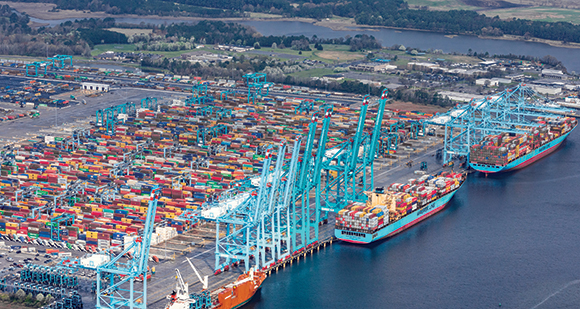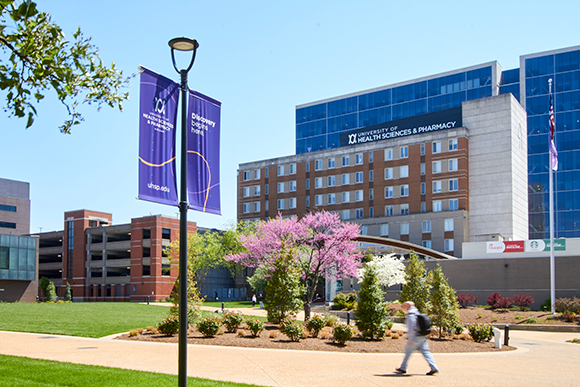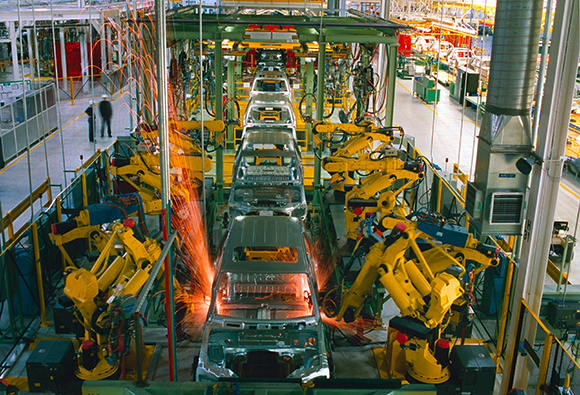|
  
|
FROM SITE
SELECTION MAGAZINE, MARCH 2022 ISSUE
|
 |
BIOPHARMACEUTICALS
It’s hard to keep pace with the slate of projects this New
Jersey–based contract development and manufacturing organization is
pursuing in locations from Iowa to Estonia to Italy (including even
more investment in Durham, North Carolina, since this interview).
The Cambrex CEO offers exclusive insights into the company’s global
approach.
|
|
 |
INVESTMENT PROFILE: TEAMCALIFORNIA
If you thought you knew the California economic development story
already, think again.
|
|
 |
HAMPTON ROADS INTELLIGENCE REPORT
Business School Dean Glenn Carrington tells us how confidence is key
at Norfolk State University.
|
|
 |
HAMPTON ROADS INTELLIGENCE REPORT | INFRASTRUCTURE
Only Hampton Roads enjoys connectivity like this.
|
|
|
CONWAY
ANALYTICS SNAPSHOT
|

|
When analyzed by 20-year ROI, No. 1 among 4,500 institutions in the
nation is the University of Health Sciences and Pharmacy in St. Louis,
Missouri. With 11 schools, the state ranked No. 12 among states with the
most institutions in the top 10% of the rankings. Photo courtesy of UHSP
|
|
The Georgetown University Center on Education and the Workforce just
released new 2022
rankings of 4,500 U.S. colleges and universities by return on
investment, using updated data from the U.S. Department of
Education’s College Scorecard. The rankings include ROI calculations
based on net present value (NPV) in various increments of time, from
10 years to 40. “Many findings hold true from our first rankings
released in 2019,” says the Center. “In general, certificates and
associate’s degrees lead to higher returns in the short term (10
years after enrollment), but bachelor’s degrees lead to higher
earnings in the long term (40 years after enrollment).”
What can we conclude about location? Emulating most people’s desire
to find the median and colleges’ desire to cultivate the cream of
the crop, I examined the report’s 20-year NPV rankings (topped by
the University of Health Sciences and Pharmacy in St. Louis) and
then sorted the top 10% (450 institutions) by state. Six states
(Alaska, Hawaii, Idaho, Kentucky, Mississippi and Wyoming) had no
schools in the top 10% by this measure, though some appeared when
ranked within other time frames. Below are the leading states by
number of institutions in the top 10%. — Adam Bruns
| State |
Top-10% Schools by 20-Year ROI |
| 1. California |
64 |
| 2. New York |
61 |
| 3. Pennsylvania |
57 |
| 4. Massachusetts |
28 |
| 5. Ohio |
27 |
| 6. New Jersey |
18 |
| T7. Connecticut |
14 |
| T7. Texas |
14 |
| 9. Washington |
13 |
| T10. Florida |
12 |
| T10. Illinois |
12 |
|
|
  |

|
AGRICULTURE
Kansas is an agricultural powerhouse.
|
|
 |
QUALITY OF LIFE
Statistically speaking, Kansas literally has bluer and brighter
skies. But there are plenty more reasons to love living in the
Sunflower State.
|
|
|
SITE
SELECTION RECOMMENDS
|
Mexico
Mattel last week announced the consolidation of North American
manufacturing operations in Nuevo Leon and expansion of its Montoi
manufacturing facility. “Montoi plays a central role in our
reimagined global supply chain operation, providing a strategic
footprint for our network in the Americas, and supports our
transformation strategy for growth as an IP-driven, high-performing
toy company,” said Mattel Chairman and CEO Ynon Kreiz. Mattel has
consolidated manufacturing operations from Tijuana, Mexico and
Montreal, Canada at Montoi. “The expanded facility will diversify
its manufacturing footprint and optimize near-shoring of production,
reduce complexity in the system and drive higher performance, while
maintaining the company’s disciplined approach to capital
expenditures,” said the company. The 200,000-sq.-m.
(2.1-million-sq.-ft.) Montoi plant is Mattel’s largest,
manufacturing iconic toys such Barbie DreamHouse, Fisher-Price Power
Wheels, and MEGA Bloks and exporting finished goods to nearly 30
countries. Mattel’s Montoi workforce has grown from 1,600 employees
in 2019 to 3,500 in 2022.
Michigan
Lithium-ion battery manufacturer LG Energy Solution this week
announced it is investing $1.7 billion to expand its operations in
the City of Holland, where it already employs 1,200. The company
will add more than 1 million sq. ft. to its existing footprint as it
expands to meet demand for both EV and energy storage batteries.
“Michigan was a natural choice to our commitment of building an
impactful global business because of its rich pool of talent, being
close to the geographic epicenter of the automotive industry, and
its strong support,” said Bonchul Koo, president of LGES Michigan.
Lakeshore Advantage said it helped connect the company with local
and state resources to help make the project a reality. Other
partners are the City of Holland, Holland Board of Public Works
(BPW), Allegan County, West Michigan Works!, Grand Rapids Community
College, Michigan Community Capital and the Michigan Economic
Development Corporation. A day later, the company announced a $5
billion JV plant with Stellantis in Windsor, Ontario, a bit more
than three hours’ drive to the east.
|
|

|
Photo courtesy of Mercedes-Benz
|
|
Mercedes-Benz earlier this month announced it had opened a new
600-job battery plant in Tuscaloosa, Bibb County, Alabama, a few
months ahead of the start of production of the all-electric
Mercedes-EQ model EQS SUV. Thanks to the comprehensive
digitalization of MO360, the digital Mercedes-Benz production
ecosystem, the same line (pictured) that produces internal
combustion engine vehicles can be adapted to produce EV models too.
Since the 1990s, Mercedes-Benz has invested a total of more than
US$7 billion in Alabama, the company says, of which $1 billion has
been invested into the battery plant, the logistics centers and a
production line upgrade to make EVs. Learn more about this project
and other blockbusters in the North American Automotive story
appearing in the May 2022 issue of Site Selection.
|
|
|
|

